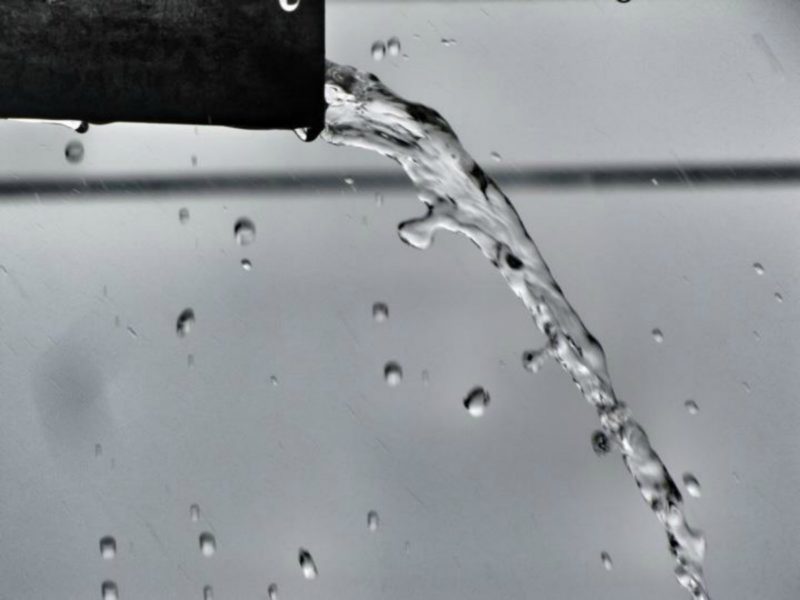How do you drain water from a pressure washer pump? It’s pretty straightforward, and it just takes seven steps, which should only take a couple of minutes. However, all of these steps are crucial, and you don’t want to miss anything out because it can surely harm your equipment.
This process is necessary to clean your car or driveway before storing your pressure washer. It is also required to drain them, especially when cold seasons are coming and you don’t want this excess water to freeze up and cause trouble. But don’t worry, we’re here to assist you. So, keep on track!

Steps To Drain Gas-Powered Pressure Washer Pump
How do you drain water from a pressure washer pump? A pressure washing machine primarily operates with water compressed inside its pump and ejected at high speeds. Thus, we can say that most of the work is done by the pump, and once the whole cleaning process is completed, a lot of water remains in this part.
To maintain the quality and performance of your washer, the pump must be emptied.
Some pressure washers may differ in the steps because they are manufactured differently. However, we narrowed it down to the most common and comprehensive measures. Without further ado, here are the steps that could answer the question, “how do you drain water from a pressure washer pump?”
#1. Determine if you utilized a fuel stabilizer or not
Every owner must be familiar with their routine cleaning process. Still, if you are a new washer owner, you should always determine if you’re going to use a fuel stabilizer or not because this could affect how someone drains the unit. If you used a fuel stabilizer, the tank must be 95% complete, as most manufacturers recommend. However, if you didn’t utilize the fuel stabilizer, just run the washer for a couple of minutes in the recommended amount.
#2. Turn off the engine and let out pressure
After cleaning your garage, it is crucial to turn off the engine. On the side part of your equipment, you can see the switch and directly turn it off. Then, we should depressurize by squeezing the trigger gun to release the pressure after the engine has shut off.
#3. Switch off the water supply
This step is critical to avoid wasting water. Moreover, we’re trying to drain water from the pressure washer pump. Therefore, we should keep the water from flowing. Some of the water might not be drained completely, thus, contributing to extensive damage.
With this, turn the faucet of the water source in the right direction.
#4. Disconnect components
Since we’re winterizing or storing the pressure washer after being used, it is beneficial to gather all components, such as the hoses, and organize them properly. First, remove the nozzle from the gun and return it to the holder. Then, disconnect the high-pressure hose from the unit and gun by twisting it slowly.
Also, remove the garden hose from the unit, and if you prefer, you can disconnect it from the water source before storing it. Then, disconnect that wand from the gun and ensure that excess water must be drained thoroughly from all components to avoid leakage. Lastly, organize and store the hoses in a safe place.
#5. Force water out of the pump
Pull the starter a couple of times and tilt the whole unit to remove excess water. By tilting the equipment, you can force water out of the system. This step will only serve as the starting step before the complete draining process.
#6. Attach a pump saver
The pump saver will serve as the fundamental component to achieving complete drainage, and it can also protect one’s unit. It can prevent corrosion and freezing and lubricate the valves and seals. This step will connect the pump saver to the inlet valve and set the bottle’s knob to the open position.
#7. Test
Pump savers are usually filled with solutions, and this can be a great help to check if there’s excess water inside the unit. Since you installed the saver earlier, we’re just going to pull the recoil a couple of times until the liquid discharged is 100% pump saver solution. With this, the whole process is complete.
However, if you have an electric pressure washer, this part is somehow different. You have to attach the saver to the intel. After which, squeeze the bottle (instead of pulling the recoil while turning the motor on.)
Continue until the liquid coming out of the discharge is 100% solution.
To End
And that brings us to the end of the topic, “How do you drain water from a pressure washer pump?” It’s pretty uncomplicated if you’re familiar with your machine unless you’re a new owner. Nevertheless, you can now safely store your pressure washer in your garage without being worried that it will freeze during the winter seasons.
There are a lot of things you can learn from us. Thus, if you want to know more about home appliances such as dryers, you can check this article entitled, “How to clean LG dryer.” Enjoy and catch up soon!
